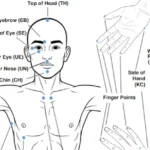The Antidote to Burnout — Using EFT to Reclaim Your Energy and Passion
Featuring the Insights of Dr. Christina Maslach & Erin Stafford
I. Introduction — When Rest Isn’t Enough
Burnout doesn’t burst through the door. It slips in quietly, like a pickpocket in a crowded market. At first, it steals the little things — the easy laugh, the extra patience, the spark of anticipation before a big project. You barely notice at first. Maybe you think it’s just “a busy season.” But then it takes more. The reds and golds of your mornings dull. The blues of your evenings fade into static. Coffee tastes flat. The wins you worked months for feel like paperwork you have to file.
One morning, you wake before your alarm. Not because you’re rested, but because your body’s tension has been holding you in a half-sleep all night. Your eyes feel gritty, your jaw tight, your shoulders knotted as if they’ve been holding up the sky. You haven’t even sat up yet, but already your chest feels heavy — like you’re bracing for something, though you don’t know what. You tell yourself you just need a weekend away. You take it. It helps for a day… maybe two. But then Monday comes. The gray is still there, curling around you like fog.
This is burnout — not “just being tired,” but the slow erosion of your emotional landscape. It’s what happens when your mind and body have been carrying the same weight for too long, without relief.
II. Burnout Unpacked — Maslach’s Groundbreaking Framework
Dr. Christina Maslach’s decades of research destroyed one dangerous myth: that burnout is a sign of personal weakness. She defines burnout as a syndrome — a predictable response to chronic stress that has not been managed successfully. It’s not about your grit, discipline, or willpower. It’s about the conditions you’re operating in.
Maslach identified six mismatches between people and their work that drive burnout:
- Workload — Too much to do with too few resources.
- Control — No real say in decisions that affect you.
- Reward — Feeling undervalued or unseen.
- Community — Lack of connection or ongoing conflict.
- Fairness — Perceptions of favoritism or inequity.
- Values — A clash between what matters to you and what’s demanded.
Her message is liberating: “Burnout is not an individual failing, but a systemic one.” That means you’re not broken. But while you fight for systemic change, the emotional fallout still needs daily tending. And that’s where EFT fits perfectly. It’s a direct way to release the frustration, grief, and helplessness that burnout leaves behind — so you have the energy and clarity to keep going.
III. The Peak Performer’s Dilemma — Insights from Erin Stafford
Where Maslach maps the system, Erin Stafford maps the psyche — especially of those who are driven, ambitious, and relentless. Her insight is blunt: the same traits that fuel peak performance also set the stage for burnout.
Three danger signs she warns about:
- Ignored fatigue — convincing yourself you can “push through” a little longer.
- Diminishing joy — when even the wins feel flat.
- Checking out — going through the motions, detached from purpose.
For high-achievers, the trap is especially cruel. You’ve been praised your whole life for being resilient, for outworking others, for “finding a way.” Slowing down feels like failure. Asking for help feels like weakness. Stafford’s solution isn’t “take a vacation” — it’s build rituals. Small, repeatable actions that reset your nervous system and restore your mental clarity.
IV. EFT — The Science and the Simplicity
Emotional Freedom Techniques combine gentle tapping on acupressure points with intentional, honest acknowledgment of what you’re feeling.
The basic process:
- Focus on the stress or problem.
- Tap rhythmically on key points: Side of hand, Eyebrow, Side of eye, Under eye, Under nose, Chin, Collarbone, Under arm, Top of head.
- Speak short phrases that validate your feelings and open the possibility for change.
Why it works:
- Tapping stimulates the parasympathetic nervous system, moving you out of “fight or flight” into a calmer state.
- Studies show reductions in cortisol, anxiety, depression, and burnout symptoms with regular practice.
- It blends physical calming, emotional validation, and cognitive reframing — exactly what Maslach and Stafford agree is needed for lasting recovery.
V. Step-by-Step Tapping Guide for Burnout Relief
Before you start: Find a quiet place, identify the most pressing burnout feeling (overwork, loss of joy, resentment), and rate it from 0–10.
Script Example:
Karate Chop Point:
“Even though these demands don’t reflect my true values, I deeply and completely accept myself.”
Eyebrow:
“I’m feeling drained by high expectations.”
Side of Eye:
“I honor my need for renewal.”
Under Eye:
“It feels unfair to work so hard and feel so empty.”
Under Nose:
“I worry I’ll never get my joy back.”
Chin:
“I’ve tried so hard to rest, but it hasn’t helped.”
Collarbone:
“I feel resentful and exhausted.”
Under Arm:
“I release guilt for not doing everything perfectly.”
Top of Head:
“I’m open to feeling energized and passionate again.”
After a round, take a breath. Re-rate the feeling. Repeat with any updated phrases until the intensity decreases.
VI. Making EFT Part of Your Daily Recovery Ritual
Small, consistent tapping is more powerful than the occasional marathon session. Try:
- Before work: A quick round to start the day lighter.
- After hard meetings: Clear the stress before diving into the next task.
- Transition time: Use tapping to mark the shift from work mode to personal time.
Keep a short journal after each session. Note not only reduced tension, but moments of clarity, motivation, or restored joy.
VII. Conclusion — Stealing Back the Color
Burnout is not proof that you’re weak. It’s proof that you’ve been strong in conditions that were draining you faster than you could refill. It steals the colors from your days quietly — until you decide to take them back.
EFT is not flashy. It doesn’t demand hours or special equipment. But it gives you a way to pause, to breathe, to tell the truth about how you feel — and to gently release the emotional static until your world starts coming back into focus.
Today, choose one feeling that’s weighing you down. Tap it through. Journal what shifts. You might not wake up tomorrow in full technicolor — but with each round, the shades deepen. The reds return. The blues brighten. And you remember: Your energy is worth protecting. Your passion is worth reclaiming. And you can start — one tap at a time.



